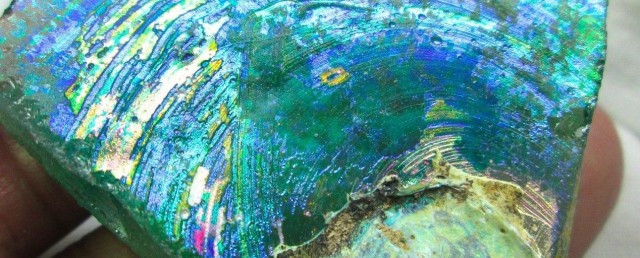
Art treasures from the earth, get a rebirth… at VT
… by Jim W. Dean, VT ancient artifacts editor
[ Editor’s note: It’s time for a mini break, as we present this classic VT piece. We all need to maintain a balance, and art and antiquities is one way to do that. Enjoy! … Jim W. Dean and Erica P. Wissinger ]
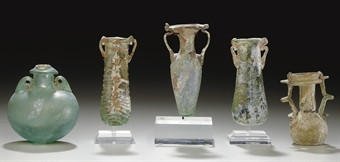
Okay, okay… we old guys getting to thinking about what we’re going to be leaving behind for someone to remember us by. Those of you with children have a head start on those of us who don’t.
And then there are the cerebral folks who get the urge to create something with their hands, something memorable that can last a long time.
Part of it is not wanting to be too hemmed in with the work groove, and needing stimulation of the fourth kind in a different area of the brain. As I have been studying and now patiently shopping for ancient artifacts, I have been growing interest in the techniques used to make them… how they evolved. It’s semi-geeky old engineer’s curiosity.
My first hook on them came when I learned that my million-year-old Paleolithic hand axe was not used for the many different tasks of those to come a half-million years later. They were primarily used for breaking the large bones of carrion that predators had killed and after the predators had eaten all they could.
Somehow early humanoids knew that bone marrow was very good for them. It is very fatty, and full of vitamins… literally a steroids shot of their day, in terms of the nutrient improvement over a basic diet.
But tool evolution fortunately progressed and sped up a great deal with the doubling of the brain size of Home-erectus. For some reason, I always feel embarrassed to say that word. From my self-study program, I found a paleontology paper which posed that the actual making of the better stone tools — the bifacial hand axes with the two ends, one blunt and the other pointed — was the first attempt at the all in one utility knife. That was kind of a WoW moment for me.
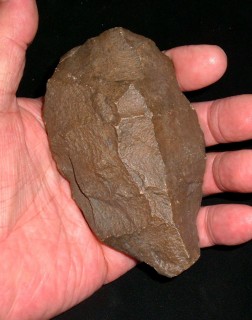
But it got better, as the author had conducted brainwave tests, hooking up modern stone toolmaking knappers — the flaking off the edges of a core stone to create a finished Acheulean hand axe — used the areas of the brain for practical and technical operations, and then also the creative, artistic part of the brain. Now I was getting hooked even more.
Fast forward to my purchase recently of some ancient Roman beads that I had skipped over in my curiosity trips of looking around at the variety of rings and jewelry. I initially looked at the beads as low end work, probably made by slave labor. But then something caught my eye… some beads seemed to have gold on them, but not really, because it was really in them.
If it were on the outside, gold leaf would have been long gone after 1700 to 2000 years. But after I took a closer look, I saw that a small glass bead had been make and partially gold-leafed, and then another layer of glass put over it to literally preserve it and making it impervious to lots of handling, but from the elements. These artisans wanted their work to last and be seen by generations.
I began to get more interested and began shopping around and quickly discovered that there was a huge high-end ancient bead following, which had driven the prices up past what the better ancient rings were going for… more than silver, but less than the gold ones…,$50, and even up into the $100’s for some.
So I said to myself, screw that, I’d buy a top-condition Roman legionnaire’s silver ring for that kind of money, versus a little ole cute bead. Here is a good example of a high-end necklace… $1500.
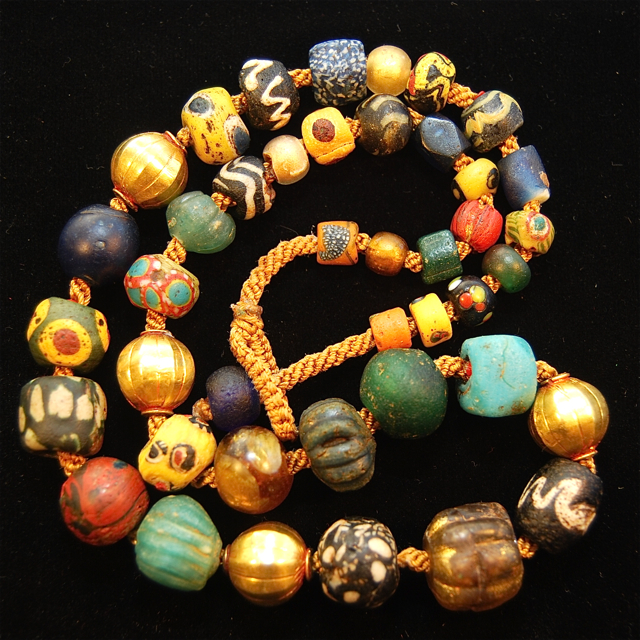
But then I discovered that the top-priced beads, besides their artistic quality, were in perfect condition, and those with dings and dents in them found themselves going into ancient glass necklaces.
And they come in really quite a variety. Next is a totally different style, a Bactrian bead $1200 necklace, 300 to 500 BC era during the early Silk Road years from the Indus Valley.
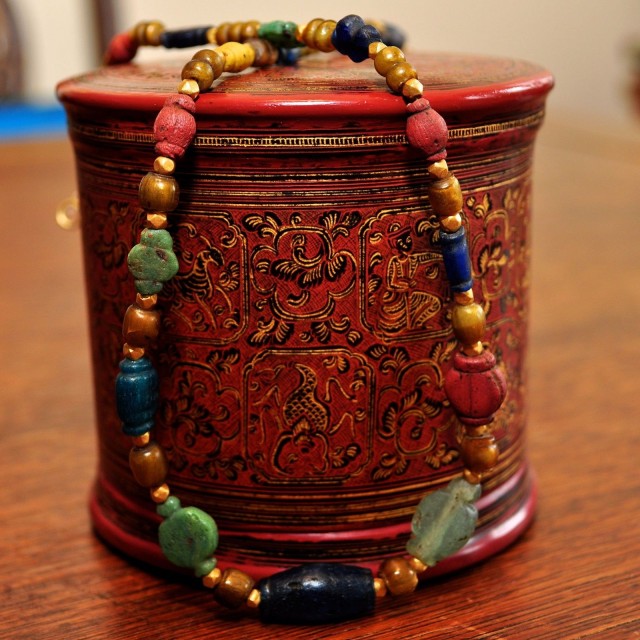
But I got lucky last week and spotted one with you know what, some of those gold-leafed beads in it, and yours truly outbid the pretenders to the new ownership position. This was my attempt to get the mostest with the leastest amount of money. Here it is.
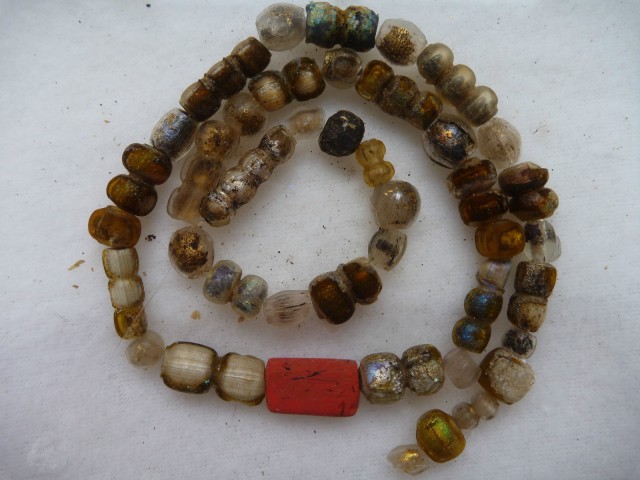
No, I have no plans for wearing this. I bought it for the individual beads. You can see some real gems in there with the iridescent colors and a few with some gold-leafing. I had already planned to do some gold-leafing on some of the rings and bronze artifacts I have been picking up, to use that for highlighting to dress up the old stuff a bit. Patinas are usually dark, and stripping all that off really takes the price down for a piece.
So I plan a one-of-a-kind artistic rehab of these for my ancient artifact restoration/recreation project. They cannot be restored to their original state, and I don’t want to do that. I want to turn them into a new work of art, to join hands with the original artists, and wonder about who will find our work 2000 years from now.
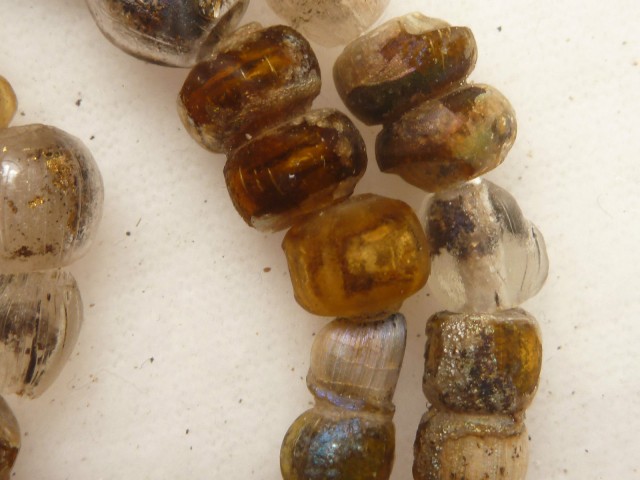
__________________________________
But finally we get to the video. I went looking for a glass bead-making video to see the actual mechanics of making these. For the ones where the outer shell is chipped, I wanted to see what the feasibility of laying new glass over them with some new gold leafing in the inner shell. That would multiply the different textures, brilliance and the visual depth, the complex oxidized ones you see in some places with the newer ones.
But I was not prepared for the demonstration of skilled craftsmanship I was about to watch. Even at the 240 resolution, it is a sight to behold. Enjoy… and be patient.
______________________
Jim Davis is the son of USMC MGySgt. Lesley Davis (Ret.) who passed away on April 24, 2006, from ALS caused by Agent Orange. His dad’s mission before he passed on was to ensure all veterans, spouses, children, and widows all received the benefits, medical care and attention, and proper facilities from the VA.
Because of the promise made to his dad to carry on the mission, in May 2006 Davis began as a one-man show sending out 535 letters every single week to all members of Congress requesting and politely demanding the fulfill their promises made over the past decades to care for life those who wore the uniform and their families.
Veterans-For-Change was born in August 2006 with a very small membership of 25 people composed of veterans, spouses, widows, family members, and friends and to date continues to grow.
ATTENTION READERS
We See The World From All Sides and Want YOU To Be Fully InformedIn fact, intentional disinformation is a disgraceful scourge in media today. So to assuage any possible errant incorrect information posted herein, we strongly encourage you to seek corroboration from other non-VT sources before forming an educated opinion.
About VT - Policies & Disclosures - Comment Policy



